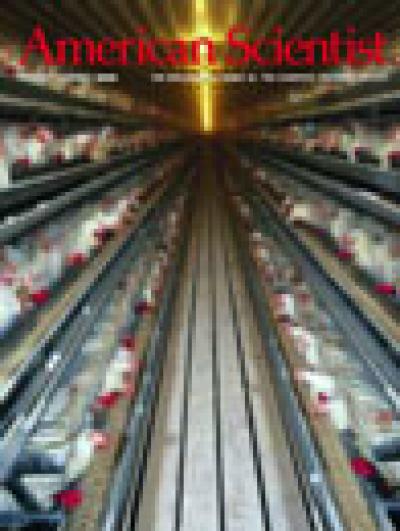Magazine
January-February 2000

January-February 2000
Volume: 88 Number: 1
In recent years the production of poultry, eggs and pork has increasingly been conducted on an industrial scale, as illustrated by a four-deck laying house in Pennsylvania. The concentration of swine facilities with their waste lagoons and sprayfields in North Carolina's Coastal Plain has raised new water-quality issues, explored by Michael A. Mallin in "Impacts of Industrial Animal Production on Rivers and Estuaries." (Photograph by Larry Lefever for Grant Heilman.)
In This Issue
- Agriculture
- Art
- Astronomy
- Biology
- Chemistry
- Communications
- Computer
- Engineering
- Environment
- Ethics
- Mathematics
- Medicine
- Physics
- Policy
- Psychology
- Sociology
Fifty Years of Radiocarbon Dating
R. E. Taylor
Anthropology Physics
This widely applied technique has made major strides since its introduction a half-century ago at the University of Chicago
The Women Scientists of Bologna
Maria Cieslak-Golonka, Bruno Morten
Anthropology
Eighteenth-century Bologna provided a rare liberal environment in which brilliant women could flourish
Impacts of Industrial Animal Production on Rivers and Estuaries
Michael A. Mallin
Environment
Animal-waste lagoons and sprayfields near aquatic environments may significantly degrade water quality and endanger health
Connecting Materials Science and Music in Steel Drums
Lawrence Murr, Everaldo Tello
Physics
A serendipitous collection of scientific, especially metallurgical, principles created melodic instruments from sawed-off steel barrels
The Galactic Environment of the Sun
Priscilla Frisch
Astronomy
The heliosphere appears to protect the inner solar system from the vagaries of the interstellar medium
Scientists' Nightstand

Nanoviews: Nabokov's Blues, The Nothing That Is and more . . .
The Editors
Communications Review Scientists Nightstand
Short takes on eleven books

Graph Theory in Practice: Part I
Brian Hayes
Computer Mathematics
Graphing netlike objects—including the World Wide Web